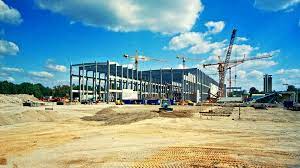Effective communication planning is the cornerstone of successful construction site management. It is the facilitator that ensures things run smoothly, deadlines are met, and everyone involved is safe and informed. Creating an environment of collaboration and transparency reduces potential errors, enhances the efficiency of operations, and promotes a culture of safety.
After reading today’s topic, check out ALICE for more information on creating a reliable construction site communication plan.
What is communication planning?
Communication planning in the context of construction sites is a strategic approach that ensures all relevant information, updates, and changes are communicated effectively to all stakeholders — from site workers and supervisors to contractors and clients.
Key aspects of communication planning for construction sites include:
- Setting communication objectives: This involves determining what must be communicated, to whom, and with what desired outcome. Objectives should be clear and concise to facilitate understanding and action.
- Identifying stakeholders: Different stakeholders will require different levels and types of communication. Understanding who needs what information is integral to the planning process.
- Designing the communication structure: This includes deciding on the communication channels (like face-to-face meetings, email, or on-site notice boards), frequency of communication, and who is responsible for sending/receiving specific information.
- Monitoring & controlling communication: Regular reviews of the communication plan and adjusting it as required based on the project’s progress and stakeholder feedback.
Keys to effective communication planning
Here are some key elements that contribute to effective communication planning in construction:
Pre-construction simulating
Before the construction begins, a pre-construction simulation can be conducted. This allows stakeholders to envision the final product, anticipate potential issues, and understand the project flow. It facilitates clear communication as everyone has a visual guide to refer to.
AI-enhanced scheduling
The advent of AI technology has dramatically benefited communication planning. AI-based tools can predict delays, reschedule tasks automatically, and notify relevant stakeholders instantly. This reduces the chances of miscommunication and keeps everyone in the loop.
Regular meetings
Regular meetings, whether virtual or face-to-face, are essential. They serve as a platform for updates, feedback, and discussions. The frequency and type of meetings will depend on the project and stakeholder needs.
Clear roles and responsibilities
Each stakeholder should know their role in the project and what is expected of them. This clarity reduces confusion and ensures seamless communication.
Feedback mechanism
A good communication plan should have a feedback mechanism where stakeholders can express their concerns, provide insights, or suggest improvements. This leads to continuous improvement in the communication process.
Contingency planning
In case of any unexpected events or disruptions, a contingency plan should be in place. This ensures that communication continues smoothly despite any obstacles.
Reflecting on the importance of communication planning
In conclusion, effective communication planning is a vital cog in successful construction site management. It is not only about transmitting information but equally about facilitating understanding, fostering transparency, and encouraging collaboration.



